Masterpiece Story: The Death of Cleopatra by Edmonia Lewis
As a Black and Indigenous woman, Edmonia Lewis overcame prejudice and defied societal expectations to become a successful sculptor. Her Death of...
Catriona Miller 1 October 2024
5 May 2024 min Read
Sand Dunes at Sunset, Atlantic City is a masterpiece of Black art and history. It was painted by Henry Ossawa Tanner during a time of incredible hardship for the Black community in the United States. However, instead of focusing on the bigotry of American society in the 1880s, Tanner focused on the charm of natural beauty. It is a landscape filled with a complex history and with stories hidden in the details.
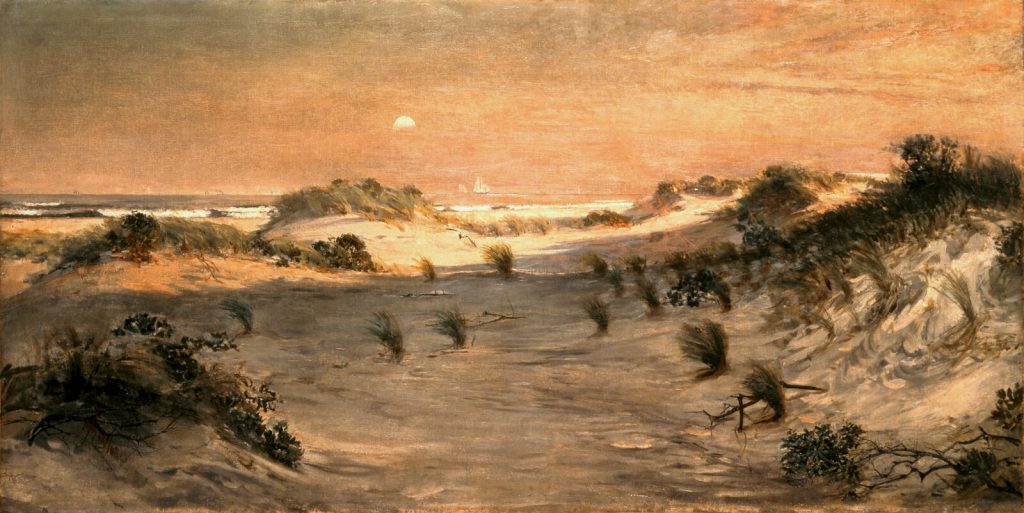
Henry Ossawa Tanner, Sand Dunes at Sunset, Atlantic City, 1885, White House, Washington, DC, USA. White House’s website.
Henry Ossawa Tanner (1859–1937) was born in Pittsburgh, PA, when the United States was on the brink of the American Civil War. It was a time of extreme political and social unrest, especially for the Black community and its allies. Tanner’s mother was a former slave who had escaped bondage via the Underground Railroad. Tanner’s father was a bishop for the African Methodist Episcopal Church. His parents’ backgrounds would later influence his artistic career as the first Black painter to gain international praise with Sand Dunes at Sunset, Atlantic City as his earliest recognized masterpiece.
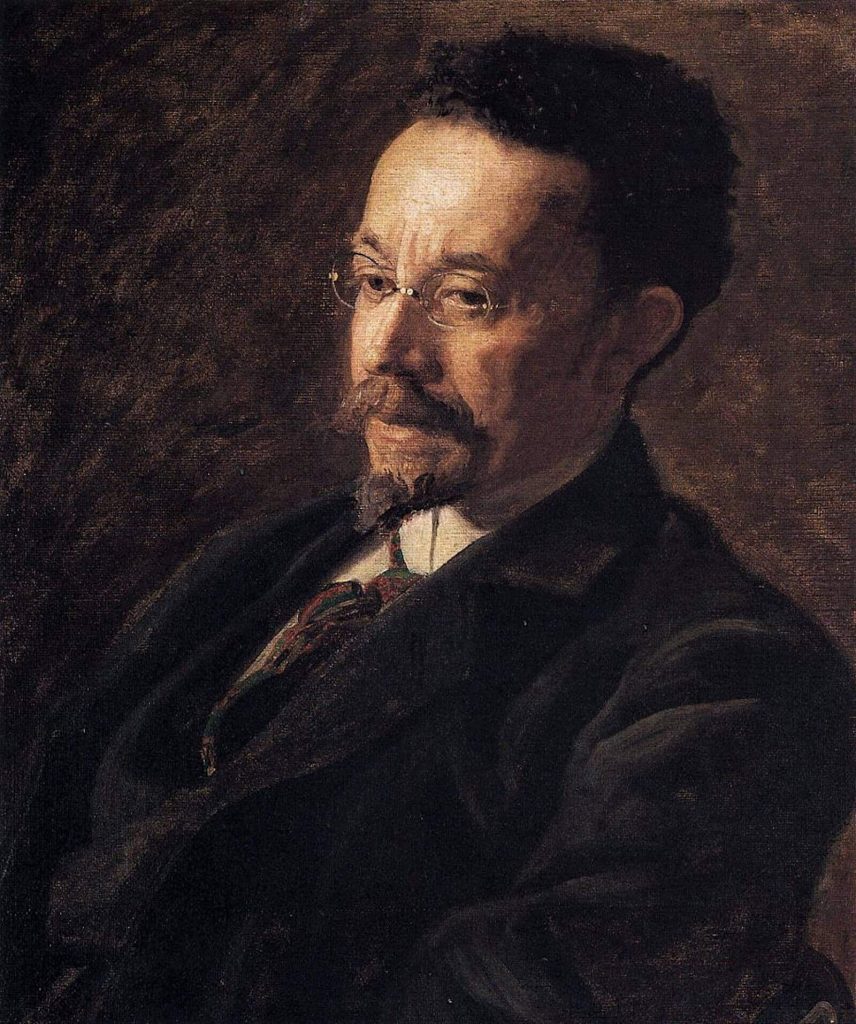
Thomas Eakins, Portrait of Henry Ossawa Tanner, 1900, Hyde Collection, Glen Falls, NY, USA. Wikimedia Commons (public domain).
Sand Dunes at Sunset, Atlantic City is an oil on canvas that was created in 1885. It measures 151 cm wide by 77 cm high (59 inches wide by 30 inches high). The image depicts a beach landscape of the famous resort town of Atlantic City, in New Jersey. The painting is a peaceful notion of sand dunes, wild grasses, and rolling waves. It is approaching evening as the sun sets behind the viewer in the West, and the moon becomes visible above the eastern horizon. Dark shadows sweep across the sand adding visual interest between the last illuminated peaks and the approaching evening gloom.
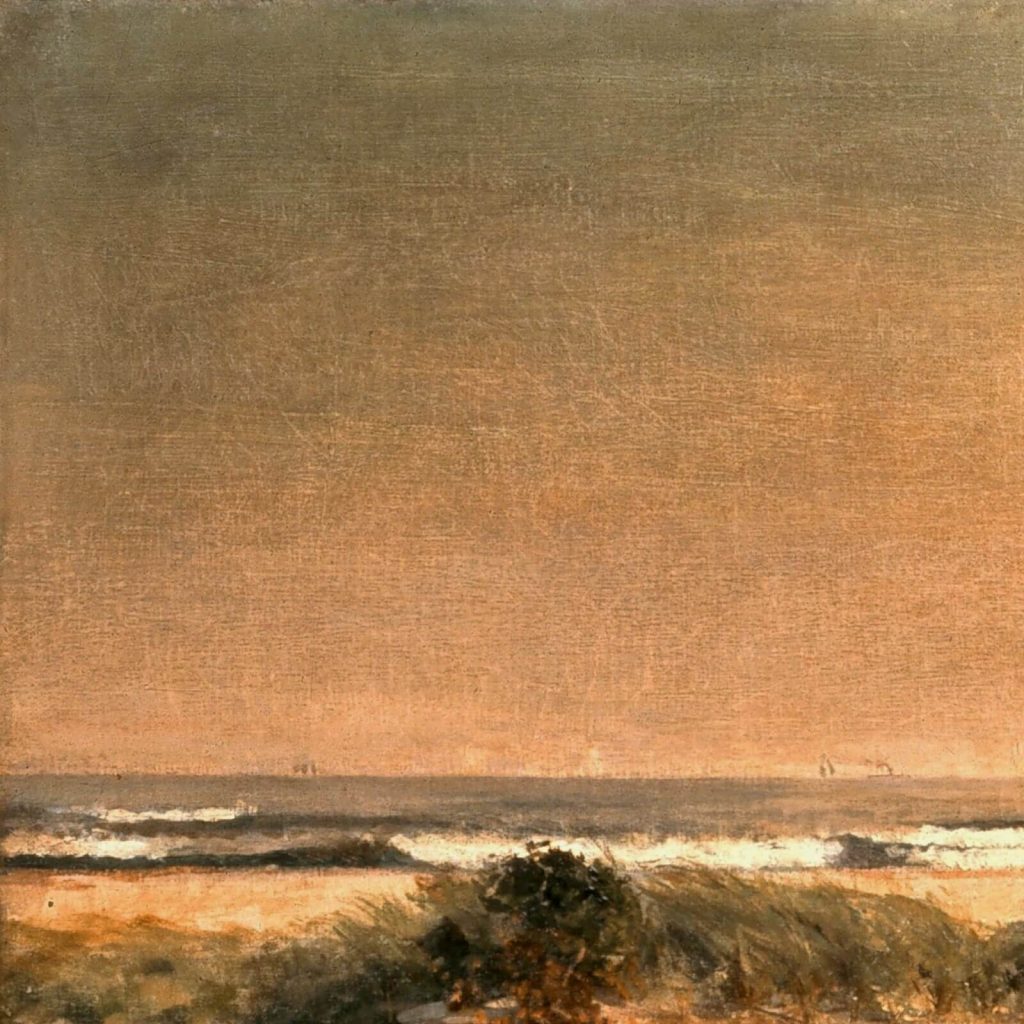
Henry Ossawa Tanner, Sand Dunes at Sunset, Atlantic City, 1885, White House, Washington DC, USA. White House’s website. Detail.
Henry Ossawa Tanner studied for approximately five years at the Pennsylvania Academy of Fine Arts under the tutelage of Thomas Eakins, a famous leading artist of American Realism. Eakins encouraged Tanner to seek visual realism through direct observation and on-site sketches. Tanner may have also used photography to aid in forming his compositions as Eakins exposed Tanner to the new modern medium. Therefore, Sand Dunes at Sunset has a strong visual likeness to its source material.
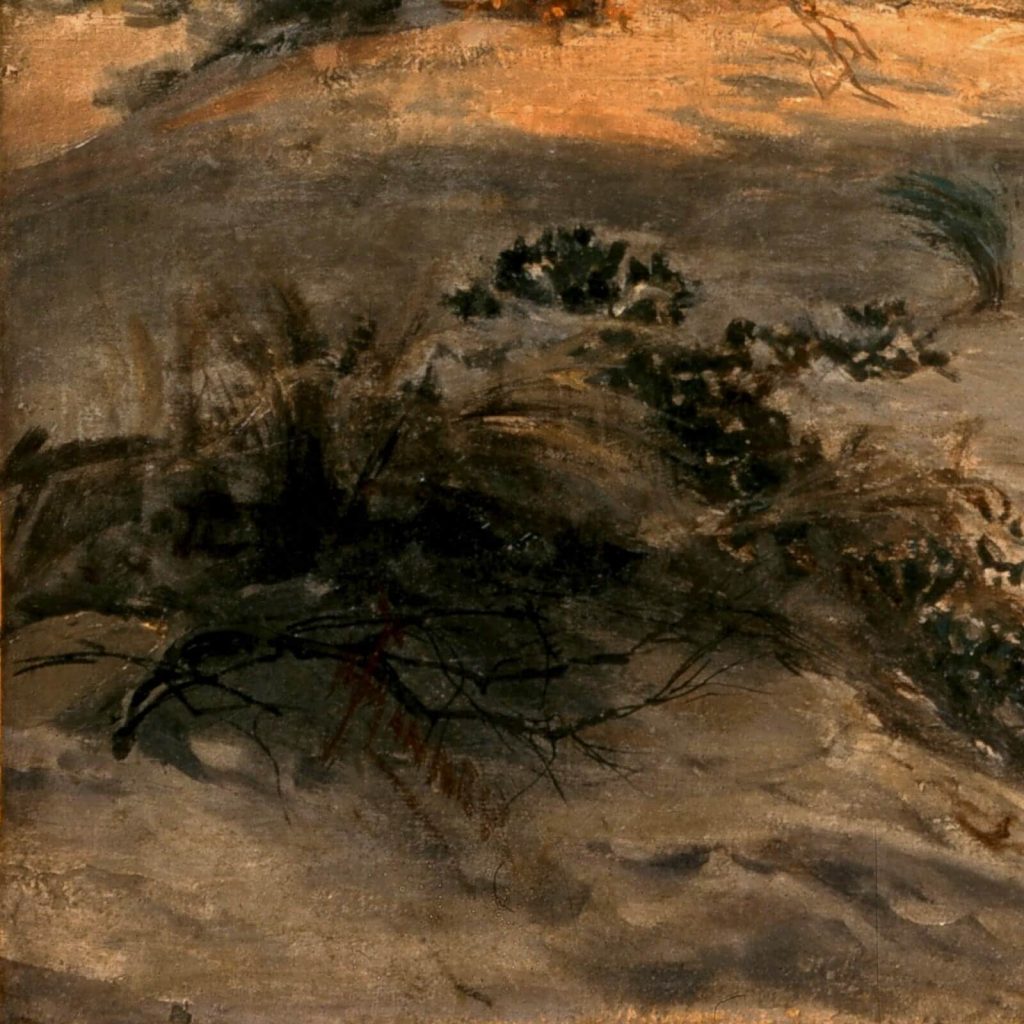
Henry Ossawa Tanner, Sand Dunes at Sunset, Atlantic City, 1885, White House, Washington DC, USA. White House’s website. Detail.
Henry Ossawa Tanner, however, was not a mere stylistic copyist of Thomas Eakins. Tanner also infused a natural dignity and quiet devotion to his pieces. Sand Dunes at Sunset is a serene reflection on the natural allure of the East Atlantic shore. Such hushed contemplation is widely found in American paintings of the post Civil War era. Perhaps the American public wanted to embrace raw artistic beauty after the recent raw brutality?
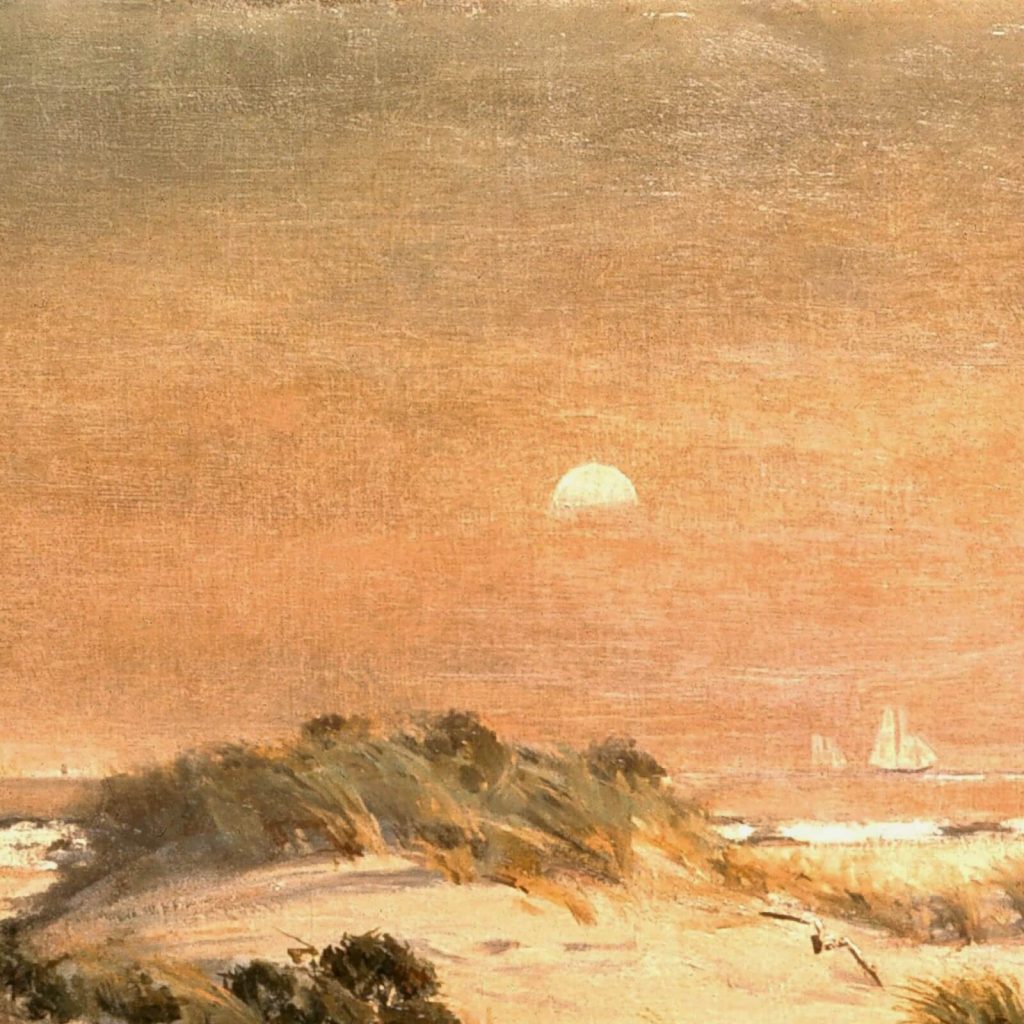
Henry Ossawa Tanner, Sand Dunes at Sunset, Atlantic City, 1885, White House, Washington DC, USA. White House’s website. Detail.
The Académie des Beaux-Arts in Paris, France was one of the leading art institutions in the Western art world during the 19th century. It set the “standards” for artistic styles, subjects, and reputations. However, Henry Ossawa Tanner did not embrace the styles or subjects promoted by the Académie and other Academic painters like William-Adolphe Bouguereau. Tanner rejected classically inspired subjects and glossy smooth finishes.
Sand Dunes at Sunset does not have mythical heroes or gods. It has two small white sailboats and the moon as its lead characters. Sand Dunes at Sunset does not have a silky polish either. It actually has beach sand mixed into the paint to create a visually rough and realistic texture. Everything Tanner included in the image promotes a landscape accessible to the viewer. It is everyday and relatable without becoming boring and forgettable.
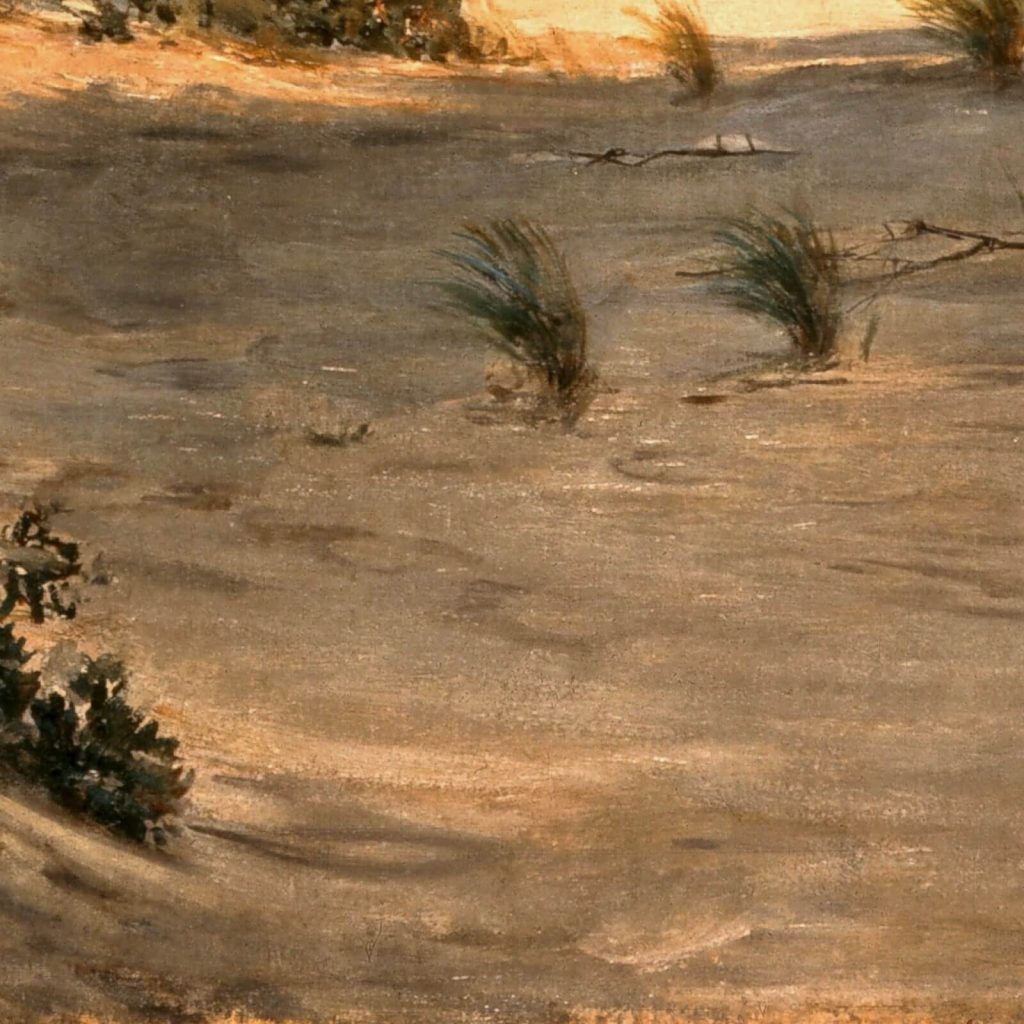
Henry Ossawa Tanner, Sand Dunes at Sunset, Atlantic City, 1885, White House, Washington DC, USA. White House’s website. Detail.
When capturing a photograph, it is necessary to select the point of focus within the composition. Otherwise, nothing will be in focus and the photograph will be a blurry visual mess. Henry Ossawa Tanner used the same ideology with Sand Dunes at Sunset to create an image that blends photographic realism and painterly expressionism. The moon, sailboats, and horizon line are each clearly defined and outlined. They are the foci within the composition and are equally points of interest. However, the remaining landscape has an almost Impressionistic blurriness. Tanner mixes paint directly on the canvas to evoke the sands and grasses of the foreground and the darkening sky of the background. Focused and unfocused elements in the painting cause eye movement which in turn causes visual interest and engagement. The painting is literally playing with our eyes.
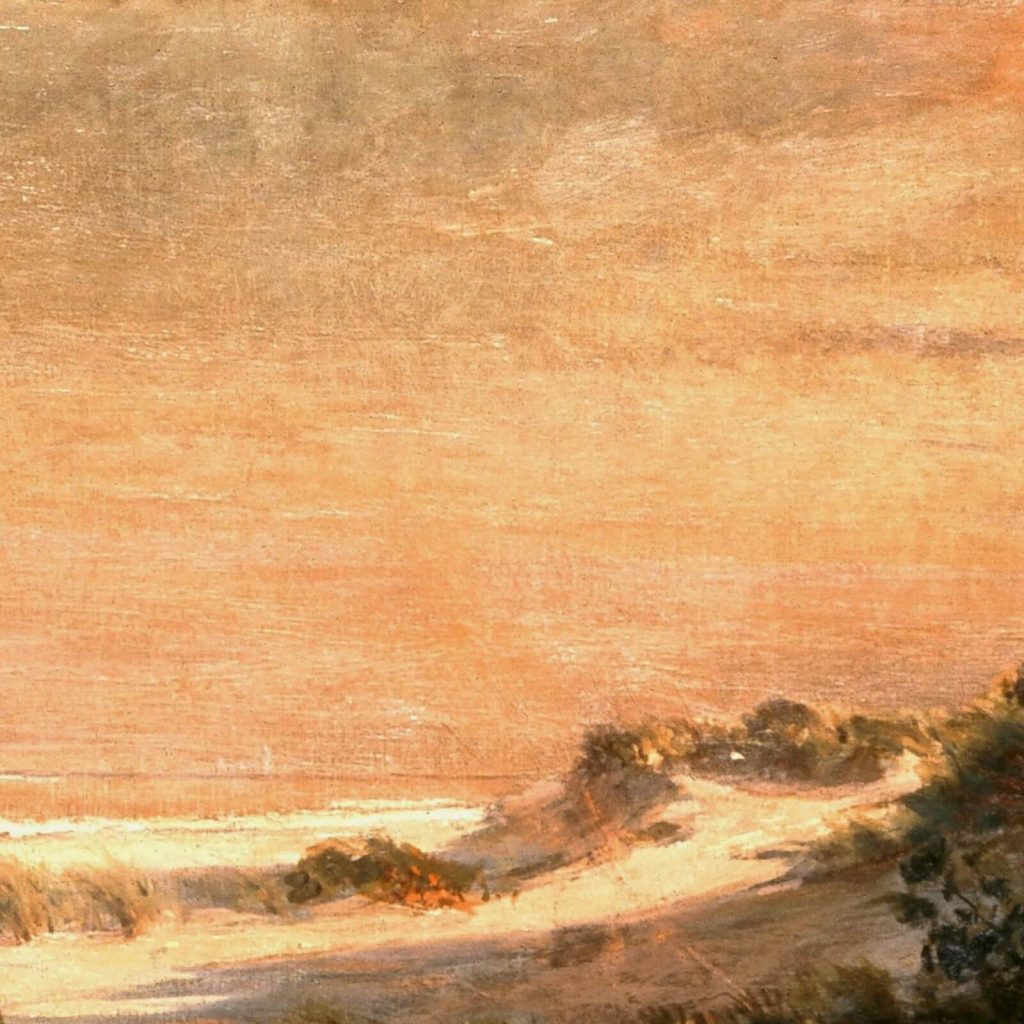
Henry Ossawa Tanner, Sand Dunes at Sunset, Atlantic City, 1885, White House, Washington DC, USA. White House’s website. Detail.
A great swathe of shadow stretches across the foreground of the landscape. It masks the foreground in darker shades while leaving the midground and background a luminous blanket of whites and creams. As the sun sets behind the viewer the shadow grows further ahead until eventually, the entire landscape will be dark and covered. The present shadow creates irregular lines across the dunes and plants. It promotes the illusion of a voluminous space from this flat-painted canvas. The shadow essentially adds an extra layer of depth to the scene. It gives it volume and distance. It also adds a sense of time as shadows are dependent on the placement of the sun, and the sun’s placement is dependent on time. Shadows equal depth. Shadows equal time.
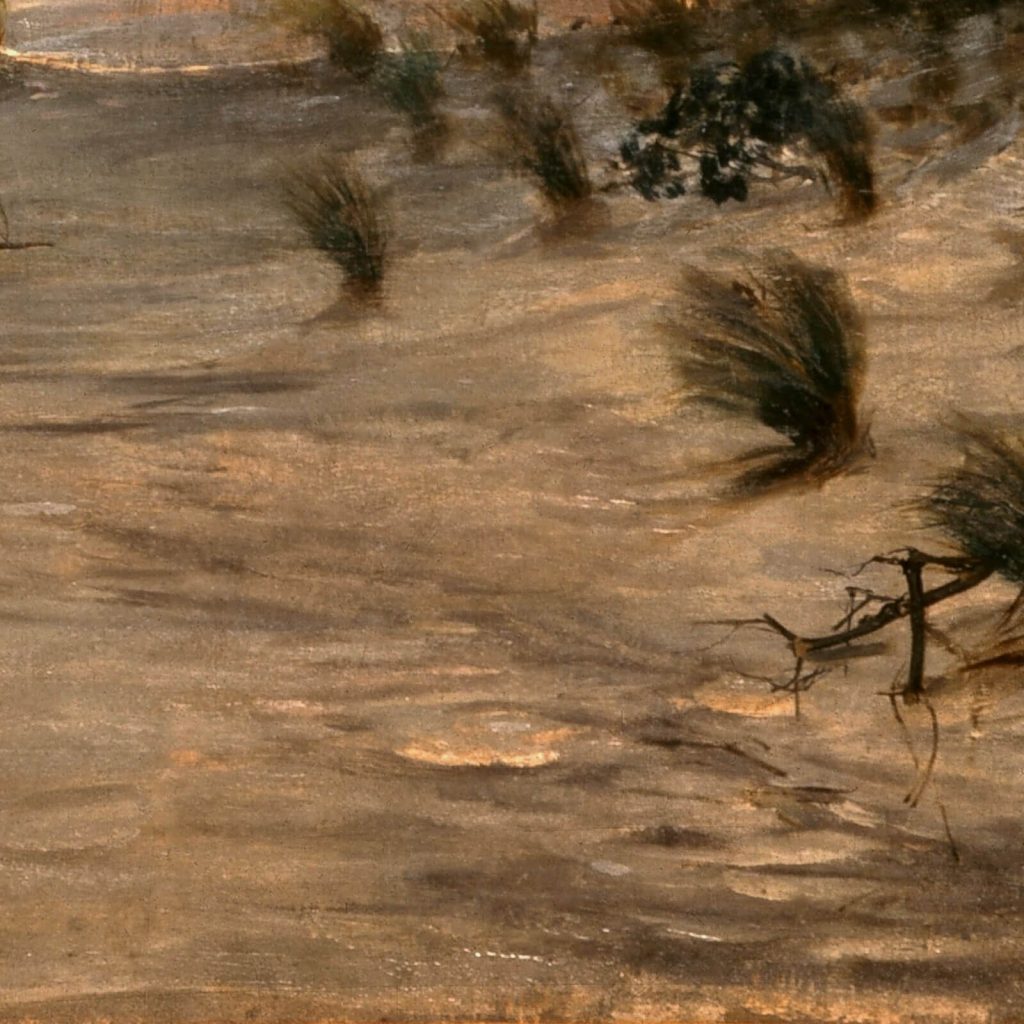
Henry Ossawa Tanner, Sand Dunes at Sunset, Atlantic City, 1885, White House, Washington DC, USA. White House’s website. Detail.
Henry Ossawa Tanner left America in 1891 and spent the remainder of his life in Paris, France where he felt he could more easily become an accepted artist. Despite the legal abolition of slavery, cultural prejudices and racism still held strong within the United States. Tanner, as a talented artist, was no exception to the prevalent racism of his day. Tanner had mixed feelings about his immigration to France. He loved the more egalitarian French society and his ability to become a respected and appreciated artist. However, he still missed his American life with its uniquely American holidays and traditions. He was once quoted as saying:
[Racism] has driven me out of the country and while I cannot sing our National Hymn…still deep down in my heart I love it and am sometimes sad that I cannot live where my heart is.
William Kloss, “Sand Dunes at Sunset, Atlantic City” in Art in the White House, 2008.
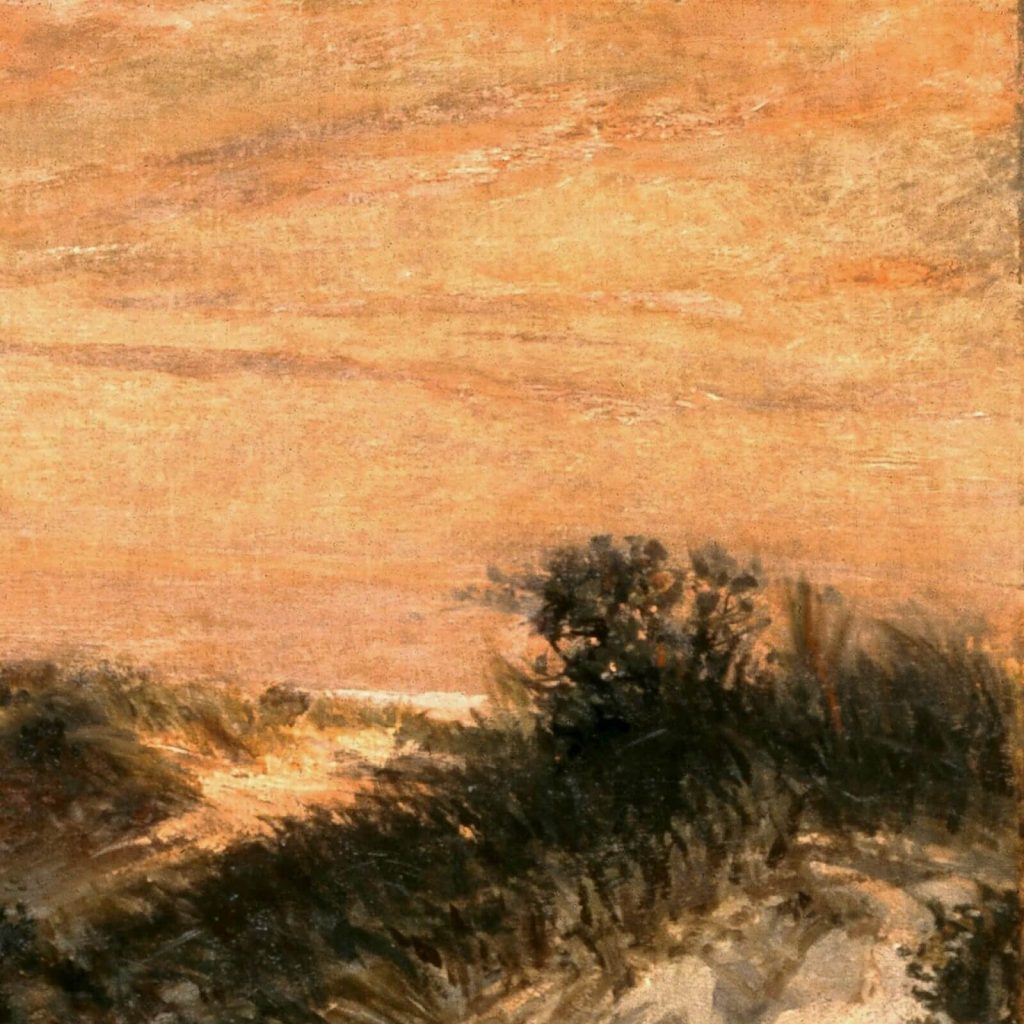
Henry Ossawa Tanner, Sand Dunes at Sunset, Atlantic City, 1885, White House, Washington DC, USA. White House’s website. Detail.
Henry Ossawa Tanner would be happy to know that Black artists are now receiving wider appreciation. His Sand Dunes at Sunset entered the permanent collection of the White House in 1996 making it the first painting by a Black artist in the collection. Several of Tanner’s works, as well as other Black artists, are on display in the nation’s Smithsonian American Art Museum. Furthermore, Kehinde Wiley and Amy Sherald were the first Black artists to be commissioned by the National Portrait Gallery to create presidential portraits. The portraits of President Barack Obama (Wiley) and First Lady Michelle Obama (Sherald) entered the collection in 2018 and marked a turning point for officially recognized Black artists.

North Portico of the White House, 2021, Washington, DC, USA. White House’s website. Detail.
Henry Ossawa Tanner is a painter who not only represents Black history but American history. Sadly, he is not given the recognition he fully deserves because he lived half of his life in France. Many Americans do not see him as American because of his “desertion,” meanwhile most Frenchmen see him as American because he was not born in France. He is an artist without an artistic home in many people’s minds. If the White House and the Smithsonian American Art Museum claim him, then so should the wider Black community and its allies. If we cannot support each other beginning with our cultural ancestors, then how can we expect to move together toward a better future? Black history is American history. A Black future is an American future. We cannot do this alone.
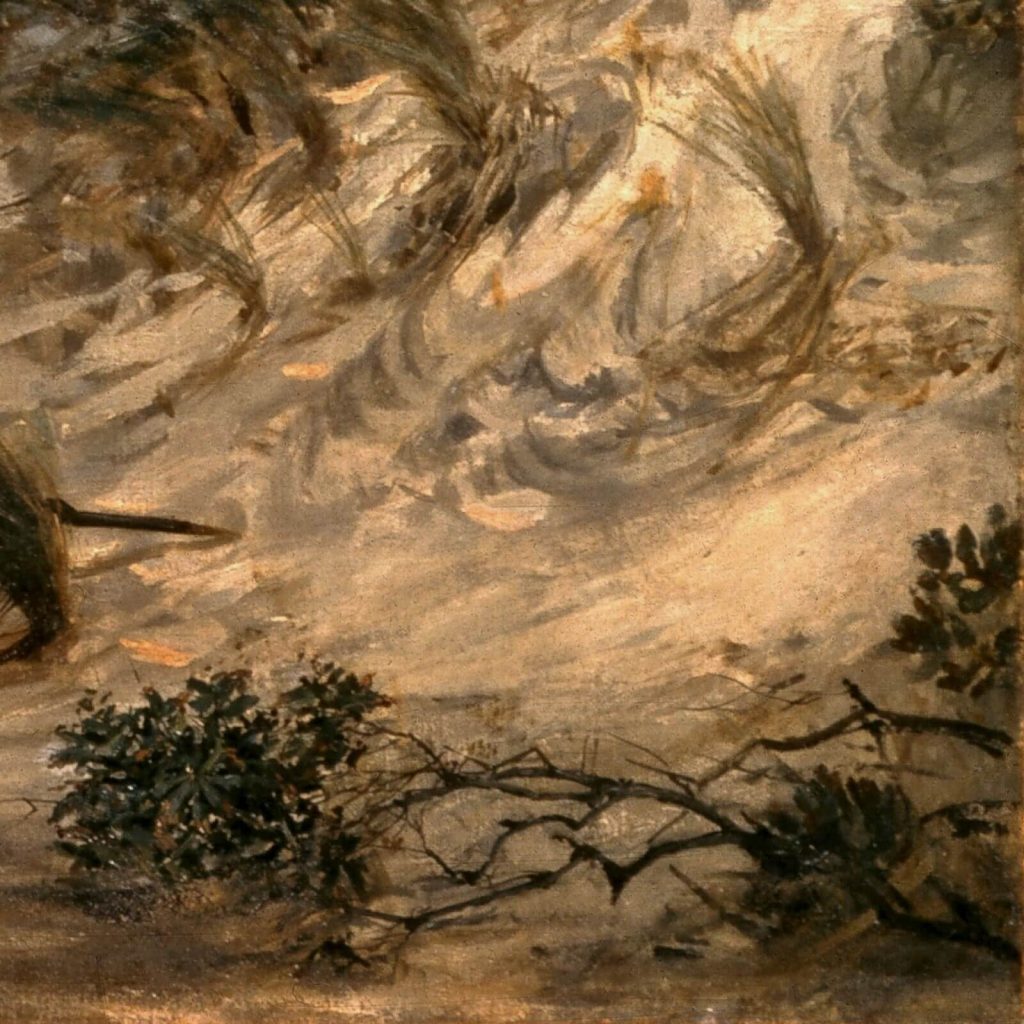
Henry Ossawa Tanner, Sand Dunes at Sunset, Atlantic City, 1885, White House, Washington DC, USA. White House’s website. Detail.
Helen Gardner, Fred S. Kleiner, and Christin J. Mamiya. Gardner’s Art Through the Ages. 12th ed. Belmont, CA: Thomson Wadsworth, 2005.
William Kloss. “Sand Dunes at Sunset, Atlantic City.” Essay. In Art in the White House, 2nd ed., 192. Washington, DC: White House Historical Association, 2008.
“Sand Dunes at Sunset, Atlantic City.” Collection. White House. Retrieved 28 January 2023.
“Sand Dunes at Sunset, Atlantic City.” Google Arts & Culture. Retrieved 28 January 2023.
DailyArt Magazine needs your support. Every contribution, however big or small, is very valuable for our future. Thanks to it, we will be able to sustain and grow the Magazine. Thank you for your help!